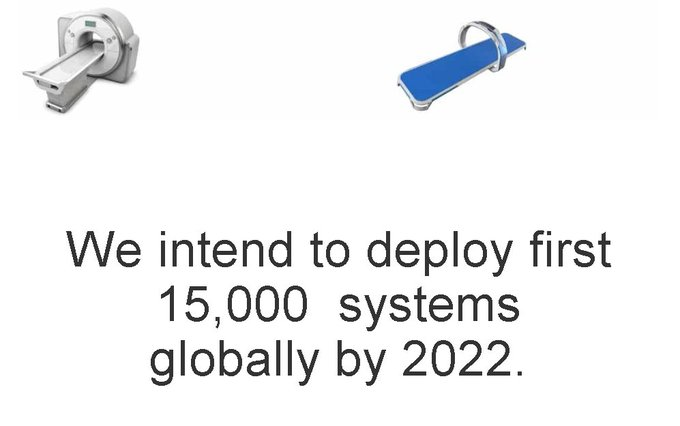Nanox has been extremely promotional in the past, as anyone, who follows the company's exploits, is well aware of. However, its latest infomercial has received zero coverage, and its recording is not even available on Nanox website or anywhere else I have looked.
Something has changed.
The infomercial was first aired a week ago on a late-night Saturday (January 7) on Bloomberg Europe, when few (if any) watch. Instead of detailed review, I am simply posting my tweets as I was watching live and then briefly going over the recording.
I was shocked by how sleazy it looked and sounded: Was Nanox CEO really faking it, or does he belong in an institution? Warm cathode! Like a chip!
This extremely embarrassing infomercial starts with a blatant lie:
For over 125 years, x-ray technology has remained based on a hot cathode with a filament that generates extreme heat.
But the
hot cathode was invented only 110 years ago (as Nanox itself states in the first page of its only
technology white paper), and there is nothing extreme about it.
Nanox has not developed any digitally-controlled x-ray tube, of course. On the other hand, all modern x-ray medical imagining devices, including those costing $500, use off-the-shelf digitally-controlled x-ray tubes.
We also hear another lie:
[Nanox.ARC] uses AI to process what it sees.
That is impossible, even if ARC were not fake (which it is), as there are no training data. Nanox itself states that it will take 7 years for the data to come - in 2027 (it won't!).
The CEO lies that 2/3 of the world have no access to medical imaging. That is easy to verify by just adding the population numbers from some countries and regions that provide medical imaging access to all.
He also lies that remote locations in the USA have no access to medical imaging. Of course, he cannot name even one such location! Remember, we are not talking about NAEOTOM Alpha - we are talking about portable x-ray or ultrasound devices that you can get for $500. In fact, @djoupvik on Twitter shows that what is probably America's most isolated town, Utqiagvik, Alaska, has ready access to "X-Ray and CT examinations, mammograms, ultrasounds, and bone density tests."
Erez claims Nanox will put ARCs in random places in Africa, but no word about electricity, radiation shielding, connectivity to cloud, and how the money will flow. Remember, SK and Nanox also claimed that they would put 15,000 systems worldwide by year 2022. Zero working ARCs have been made as of today.
Nanox CEO also tries to convince the viewer that the cold cathode is something new. Little did he know what
anyone who can read knows - Roentgen discovered x-rays in year 1895 using a
COLD-CATHODE x-ray tube.
 |
| image source: https://www.dailymail.co.uk/news/article-6491287/Roentgens-human-X-ray-wifes-hand-1895.html |
And then we hear another one:
It is a cold cathode. It is like a chip that is the source that get [sic] the nano x-ray to the body, actually, to the detector, and based on this, we analyze the image itself.
Since there is no such thing as nano x-ray, substantial equivalence is impossible for the ARC, if it were real - something that the FDA might be interested in knowing...
The CEO then lies that what's different about the ARC is its ability to transform 2D x-ray images into 3D x-ray images - yet he knows that
this had been done since the 1930s. It is in the first paragraph of Nanox
tomosynthesis white paper.
He also claims that there is
an arc over the bed with tubes that are taking pictures.
I mean, those fake tubes sound a lot like cameras rather than real x-ray tubes, don't they? Real x-ray tubes don't take pictures - they emit x-rays.
In the mean time, the producer states:
Legacy x-ray systems are widely deployed...
and inadvertently exposes the earlier "2/3 of the world population" lie uttered earlier in the infomercial. The CEO replies:
We are not competing with the CT, ok, we are not competing with the x-ray...
The FDA may be interested to know that, as well, as it has relevance to finding predicate in that clearance submission Nanox claimed to have filed last September.
And then I get bored, because the CEO starts talking about CT, which is a proven and widely-available medical imaging technology, and
when you do a CT, there is [sic] a lot of data... We are planning to super-power the data...
So we should just buy the $20,000 CT, then, instead of waiting for the free but fake ARC?
That really looks like the future of medical imaging,
says a producer at the end. Nice.
Update May 3, 2023: Infomercial now posted on YouTube. Given the stated ARC indications by Nanox in the 510k, it is clearly misleading.



.jpg)







.png)






























